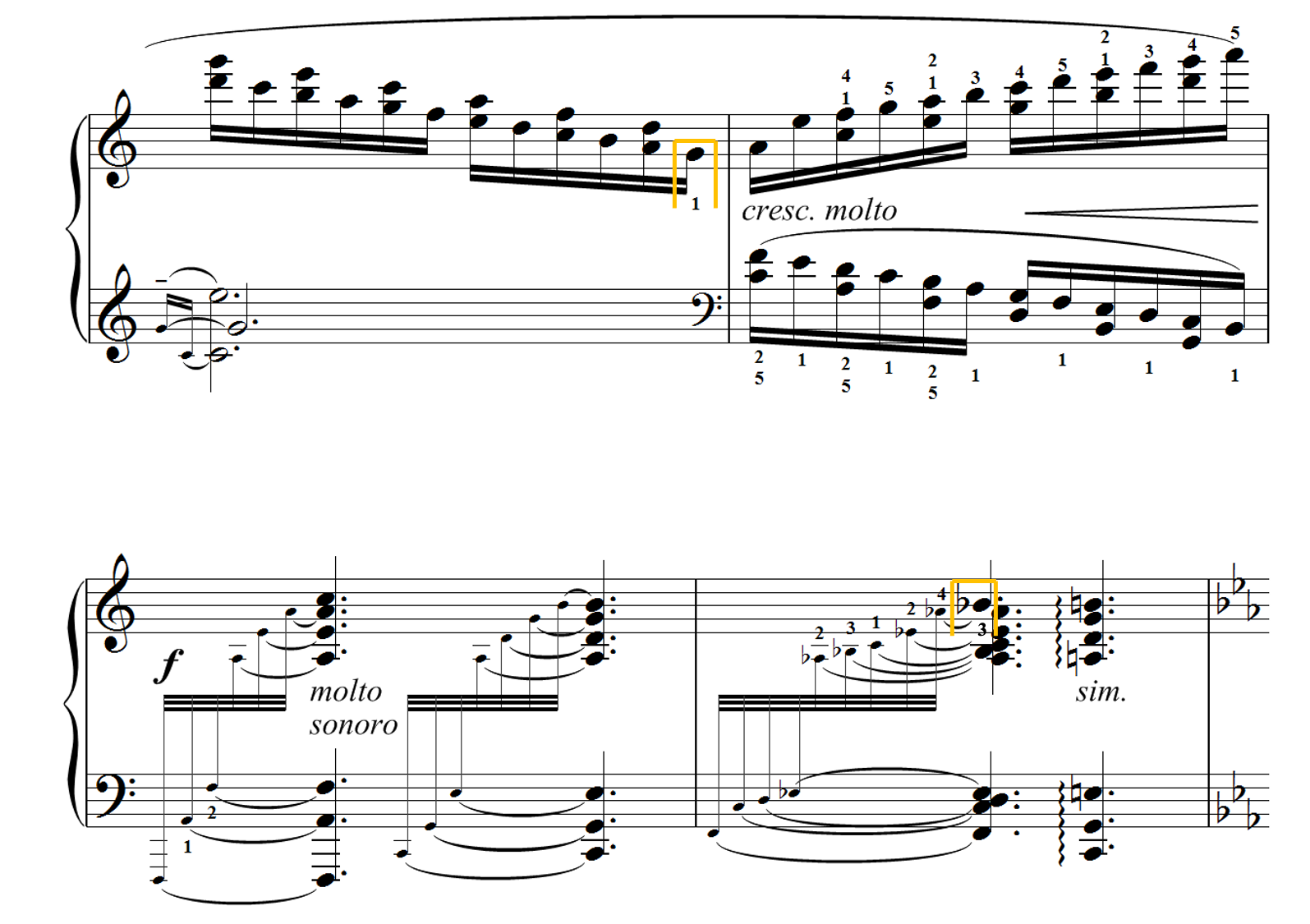“I find it easier to keep the LH within an octave where possible. The leap to 1 on a black can also be uncomfortable.”
Submitted by Michael Clark
Published on 3/16/2020

“I find it easier to keep the LH within an octave where possible. The leap to 1 on a black can also be uncomfortable.”
Submitted by Michael Clark
Published on 3/16/2020

“This redistribution allows the middle voice to remain legato while the articulation in the top voice is observed.”
Submitted by Michael Clark
Published on 3/16/2020

“Taking the first note in the left hand allows the right hand to stay in a more compact position. This provides a more secure start in the fortissimo dynamic even though the position can’t be maintained in subsequent measures.”
Submitted by Michael Clark
Published on 3/16/2020

“I find it easier to stop dividing the hands in mm. 4–5 and take the thirds as double notes rather than leap around.”
Submitted by Michael Clark
Published on 3/16/2020

“This redistribution makes the right-hand shifts less awkward, allowing the line to be played with stronger fingers.”
Submitted by Michael Clark
Published on 3/16/2020

“I stagger the leaps where possible by taking some thirds as double notes.”
Submitted by Michael Clark
Published on 3/16/2020

Submitted by Michael Clark
Published on 1/27/2020

Submitted by Michael Clark
Published on 1/27/2020

Submitted by Michael Clark
Published on 1/27/2020

“I prefer keeping three voices in the right hand for most of this passage to allow increased freedom of fingering in the left hand.”
Submitted by Michael Clark
Published on 1/27/2020

“Taking the tenor line in the left hand from the very first notes assists the right hand in sustaining the alto line comfortably for its full value.”
Submitted by Michael Clark
Published on 1/27/2020

“This fingering allows the bass E to sustain even if the upper voices are played legato.”
Submitted by Michael Clark
Published on 1/27/2020

“This redistribution helps the right hand avoid changing positions or crossing over with 2.”
Submitted by Michael Clark
Published on 1/27/2020

“Taking the B-flat in the right hand relieves the left hand from navigating either a leap or a stretch of a sixth into the remaining sixteenth notes, which I find unreliable at quick tempo.”
Submitted by Michael Clark
Published on 1/27/2020

“Switching the sixteenth notes to the left hand one note earlier allows the fingering patterns to flow more naturally in both hands. The suggested fingering for the grace notes in m. 31 uses stronger fingers to achieve the ‘molto sonoro’ forte tone Barber desires.”
Submitted by Michael Clark
Published on 3/18/2020

“Switching the C to the left hand allows for a more evenly divided roll and requires the right hand to move less from its previous position.”
Submitted by Michael Clark
Published on 3/18/2020

“Taking the marked notes in the left hand allows the middle voice to be played legato without stretching.”
Submitted by Michael Clark
Published on 1/1/2020

“Barber’s original note distribution and pedaling prevents the tenor F-flat from connecting to the E-flat. This fingering allows the right-hand thumb to sustain the tenor line. I take an extra pedal change on the final E-flat in the bass staff while keeping all tied notes depressed.”
Submitted by Michael Clark
Published on 1/1/2020